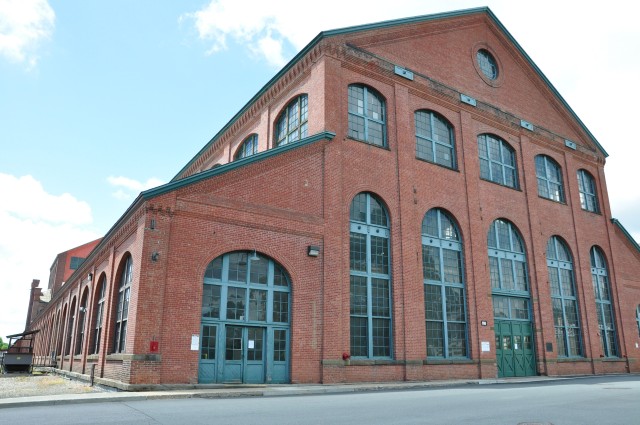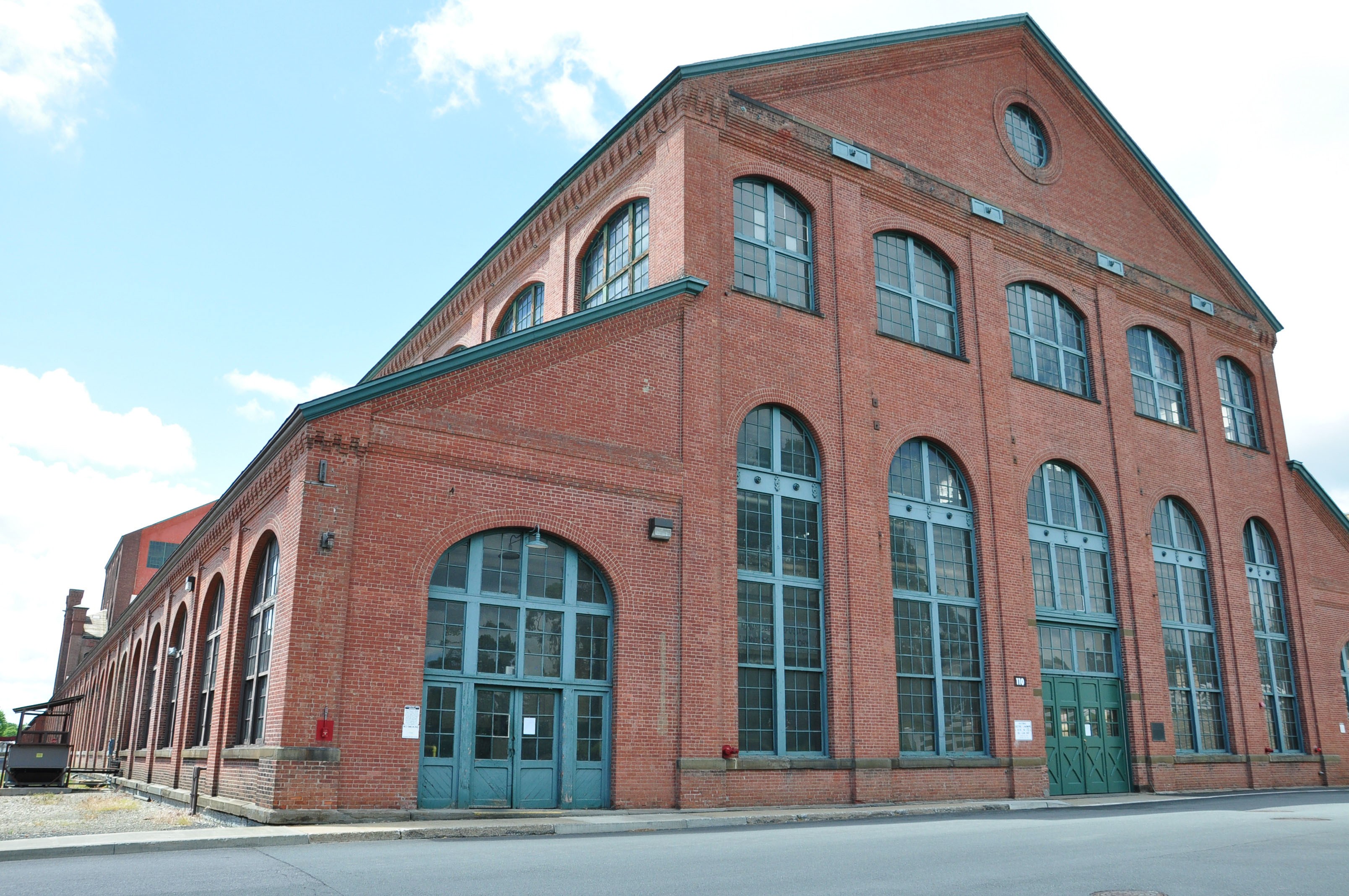WATERVLIET ARSENAL, N.Y. -- While the Federal Reserve Bank of New YorkAca,!a,,cs Empire Manufacturing Survey showed today that its general business conditions index and employment fell in December from November, the Watervliet continues to generate and sustain jobs in New York's Capital District.
According to some people in New YorkAca,!a,,cs Capital District, the Watervliet Arsenal has become the Army post that folks love to drive by Aca,!aEURc without giving it a second thought. Outside the Arsenal fence line, there is a large part of the local community that may have lost touch with its only active-duty Army post in the Capital District.
Some in the community say they are indifferent to the Arsenal because the Army post has been a part of the community for so long they simply donAca,!a,,ct give the Arsenal a second thought.
The Arsenal has continuously manufactured military goods and equipment since 1813.
Others say they thought the Arsenal had closed due to multiple layoffs the workforce suffered in the 1990s. Through nine reductions in force during a 10-year span beginning in the 1990s, the Arsenal workforce declined from nearly 3,000 workers in 1990 to a little over 400 by 2001.
Today, the Arsenal has 631 workers supporting the manufacturing mission and of that number, more than 90 of those were hired in the last 12 months.
Then there are those who say they donAca,!a,,ct see the traffic going in or out of the ArsenalAca,!a,,cs main gate as they once did and so, thought the Arsenal had closed.
After the 9/11 attacks, the Arsenal leadership decided to move the main entry gate from along I-787 to a south gate for added force protection. As a result, tens of thousands of drivers no longer see the traffic flow into and out of the Arsenal.
But if the community took a second look, they would find a $1.6 billion facility with more than 1,300 workers driving in and out of the gate every day. In addition to the 631 workers supporting the manufacturing mission, there are more than 700 employees who work in one of the 31 military and civilian tenant organizations that have business activities on the Arsenal.
They would also find an active manufacturing business that had a $130 million budget for the last fiscal year ending in September. Within this budget was $22.5 million for New York state businesses. Of that amount, nearly $13.8 million remained in the Capital District going to local businesses that had contracts with the Arsenal.
Additionally, if the community took a second look they would find the Arsenal workforce, not counting workers from the tenant organizations, had a pay and benefits package totaling more than $51 million last year. That should seem to be a significant economic point to make considering that much of that pay and benefits were used locally for such things as home mortgages to car buying to purchasing eye glasses from a local vision center.
Col. Scott N. Fletcher, Arsenal commander, said that despite what some may believe, the Arsenal has always been in a state of continuous change.
Aca,!A"There is nothing static or sedimentary about the Arsenal and we are far from being irrelevant. Although the Arsenal has supported the nation in every national crisis since 1813, there have been some who have attempted to shutter the gates after every conflict. If we didnAca,!a,,ct continuously transform our business practices and our capabilities, this historic national treasure would have closed years ago,Aca,!A? Fletcher added.
Fletcher was alluding to how the ArsenalAca,!a,,cs original manufacturing missions were to produce leather goods for SoldiersAca,!a,,c uniforms, ammunition, and carriage parts. Then, in the early 1890s, the Arsenal revolutionized its manufacturing and quickly became the nationAca,!a,,cs leading provider of large caliber cannons, a title it still holds today.
According to John Hockenbury, director of operations, in addition to manufacturing cannons, the Arsenal has always sought ways to adapt its manufacturing capability to enter niche markets so that it may keep its workforce and machines employed.
Aca,!A"If we thought we could still do business as our grandparents did in World War II, we would have had to close our doors years ago. Today, we retain the tag as the nationAca,!a,,cs sole manufacturer of large caliber weapons for the U.S. Army, but we have also leveraged our capability, in regards to people and equipment, to supply the Army with non-traditional products such as gun protection kits for High-Mobility Multipurpose Wheeled Vehicles or HMMWV and with smaller caliber tubes for three different mortar systems,Aca,!A? said Hockenbury.
Joe Turcotte, chief accounting officer, said that at the end of the day, the Arsenal must operate like Ford or General Electric. The Army treats its arsenals and depots as if they were a business but with one major constraint Aca,!aEURc they work to break even versus earn a profit.
This means that during high production years, the additional revenue cannot be kept by the Arsenal as a Aca,!A"rainy day fundAca,!A? or for future growth. Any profits are returned back to the Army in the form of reduced prices for weapons.
Turcotte adds that unlike other Army installations such as Fort Drum, N.Y. and Fort Bragg, N.C., the Watervliet Arsenal does not receive Congressional appropriated funding for its operating costs. So its funds to maintain Arsenal facilities, pay employees, and buy equipment must be generated by its manufacturing base.
Aca,!A"Maintaining the ArsenalAca,!a,,cs high fixed costs of operation for its specialized niche manufacturing mission takes a significant amount of resources. We continually look for new streams of revenue in order to survive in a tough manufacturing environment,Aca,!A? Turcotte said.
During the last five years, the Arsenal has aggressively sought military and civilian tenants to move into underutilized facilities, Turcotte said. The revenue generated from the 31 tenant organizations contribute notably to lowering the overhead cost of goods for the customer.
The Arsenal Business & Technology Partnership is the lease manager for 16 commercial, non-government tenants, such as M+W Zander and Vistec Lithography.
"Through the Arsenal Support Program Initiative or ASPI investments, the Partnership generated an economic impact of $95 million in 2008," said Peter Gannon, vice president of the Arsenal Business and Technology Partnership. "In addition, $74 million has been returned to the Arsenal to lower costs associated with maintenance, utilities and production."
Additionally, the Partnership has created or sustained the equivalent of 501 jobs for fiscal year 2008.
The ArsenalAca,!a,,cs largest military tenant is the ArmyAca,!a,,cs BenAfAt Laboratories. BenAfAt, with its more than 250 scientists and technicians, provide research, design, and prototype production for the ArmyAca,!a,,cs legacy and future large caliber weapon systems. Its collocation on the Arsenal provides unprecedented synergy by having those who design the weapon systems within a five minute walk to those who will manufacture the weapon system.
BenAfAt Laboratories provides more than $20 million to the local community in the way of pay and benefits. This is in addition to the ArsenalAca,!a,,cs $51 million pay and benefit package.
So, given these tough economic times, maybe folks ought to give the Arsenal another look Aca,!aEURc just not at 55 mph on I-787.










Social Sharing